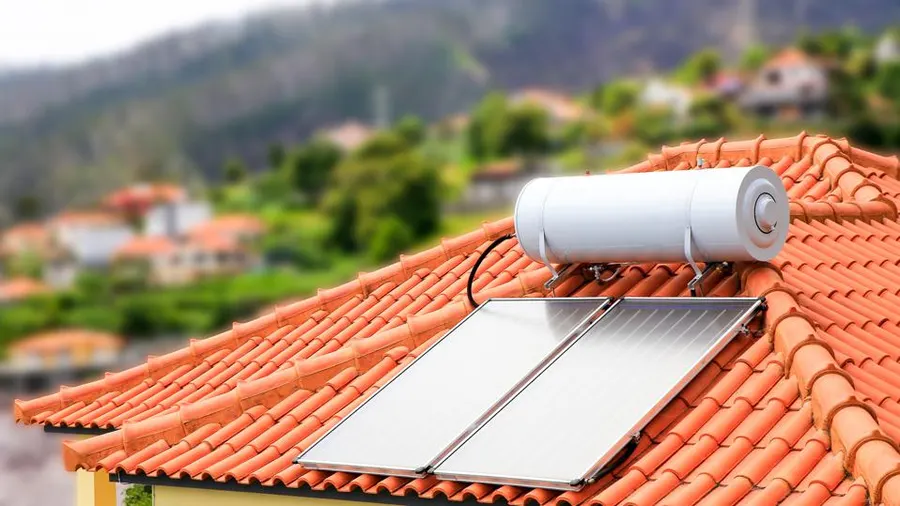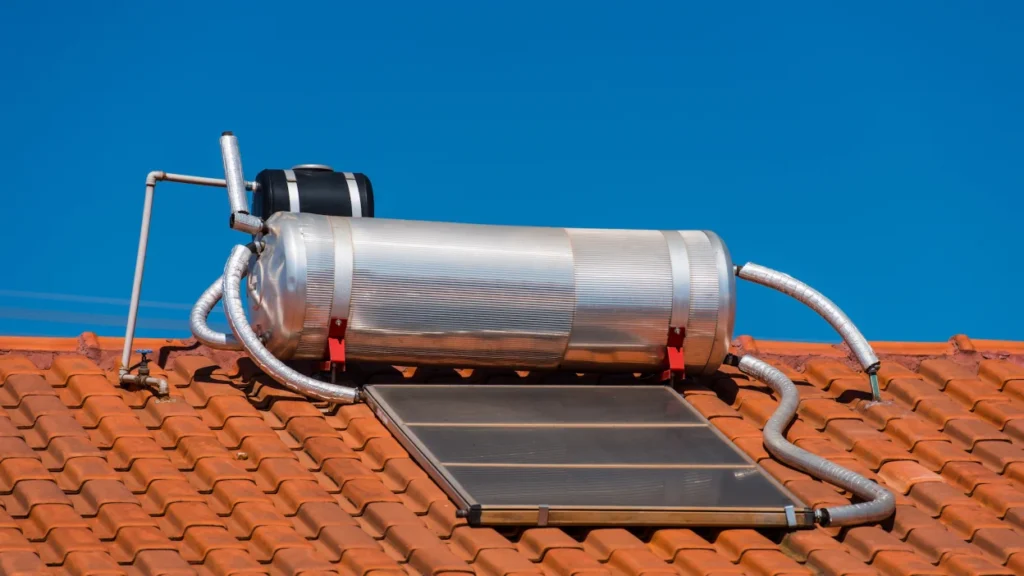Solar water heaters are an efficient and eco-friendly way to heat water using the power of the sun. These systems are designed to capture solar energy and convert it into heat, providing hot water for residential, commercial, and industrial use. Solar water heaters can significantly reduce energy bills and lower carbon footprints, making them an attractive option for those looking to adopt sustainable living practices.
How Solar Water Heaters Work
Solar water heaters work by using solar collectors to absorb sunlight and transfer the heat to water. The heated water is then stored in an insulated tank for later use. There are two main types of solar water heating systems: active and passive.
Active Solar Water Heating Systems:
- Circulation: These systems use pumps or controllers to circulate water or heat-transfer fluids through the collectors.
- Types:
- Direct Circulation Systems: Water is circulated directly through the solar collectors and into the home. Ideal for regions that don’t experience freezing temperatures.
- Indirect Circulation Systems: A non-freezing heat-transfer fluid is circulated through the collectors and a heat exchanger, which then heats the water. Suitable for colder climates.
Passive Solar Water Heating Systems:
- Circulation: These systems rely on natural convection (the tendency of hot water to rise) to move water through the system, with no need for pumps.
- Types:
- Integral Collector-Storage (ICS) Systems: The solar collector and storage tank are combined into one unit. Cold water flows through the collector, where it is preheated before entering a conventional water heater.
- Thermosiphon Systems: Water flows through the system as it heats up, with the storage tank positioned above the collector. This system is reliable but requires careful installation to ensure proper function.
Components of a Solar Water Heater
Solar Collectors:
- Function: Capture sunlight and convert it into heat.
- Types:
- Flat-Plate Collectors: Consist of an insulated box with a glass cover and a dark absorber plate that captures and transfers heat to the water.
- Evacuated Tube Collectors: Made of parallel rows of transparent glass tubes, each containing a vacuum and a metal absorber. They are more efficient, particularly in colder climates.
- Integral Collector-Storage (ICS) Units: Combine the collector and storage in one unit, commonly used in mild climates.
Storage Tanks:
- Function: Store the hot water until it is needed.
- Types:
- Single-Tank Systems: The solar storage tank is integrated with the conventional water heater.
- Two-Tank Systems: Solar storage is separate from the conventional heater, allowing preheated water to flow into the conventional unit.
Heat Exchanger:
- Function: Transfer heat from the solar collector to the water or heat-transfer fluid.
- Location: Can be located inside the storage tank (internal) or outside (external) as part of an active system.
Controller and Pump (Active Systems):
- Function: Monitor the system and control the operation of the pump to circulate water or fluid between the collector and storage tank.
- Features: Some controllers include freeze protection and overheat protection.
Backup Heater:
- Function: Provides additional heating when solar energy is insufficient, ensuring a reliable hot water supply.
- Types: Can be electric, gas, or another conventional water heating method integrated with the solar system.
Benefits of Solar Water Heaters
Energy Savings:
- Solar water heaters significantly reduce the amount of conventional energy needed to heat water, leading to lower energy bills.
Environmental Impact:
- By using renewable solar energy, these systems reduce greenhouse gas emissions and decrease dependence on fossil fuels.
Low Operating Costs:
- After the initial installation, solar water heaters incur minimal operating costs, making them a cost-effective solution in the long term.
Increased Property Value:
- Installing a solar water heater can increase the value of your property by making it more energy-efficient and attractive to eco-conscious buyers.
Reliability:
- Solar water heaters are durable and can last for decades with proper maintenance. Passive systems, in particular, have few moving parts and are less prone to failure.
Installation and Maintenance
Site Assessment:
- Sunlight Exposure: Ensure the solar collectors are installed in a location that receives direct sunlight for most of the day, free from shading by trees or buildings.
- Roof Strength: Verify that the roof can support the weight of the solar collectors and any additional equipment.
System Sizing:
- Hot Water Demand: Determine the daily hot water usage to size the system appropriately. A larger family or higher water demand will require a bigger system.
Professional Installation:
- Quality Assurance: Hiring a certified professional ensures that the system is installed correctly and meets local building codes and regulations.
Regular Maintenance:
- Cleaning: Periodically clean the solar collectors to remove dust, leaves, and debris that can reduce efficiency.
- Inspections: Regularly check the system for leaks, corrosion, and proper operation. Active systems may require occasional pump and controller maintenance.
Freeze Protection:
- Cold Climates: Ensure the system is equipped with freeze protection mechanisms, such as antifreeze solutions or drain-back systems, to prevent damage during freezing temperatures.

